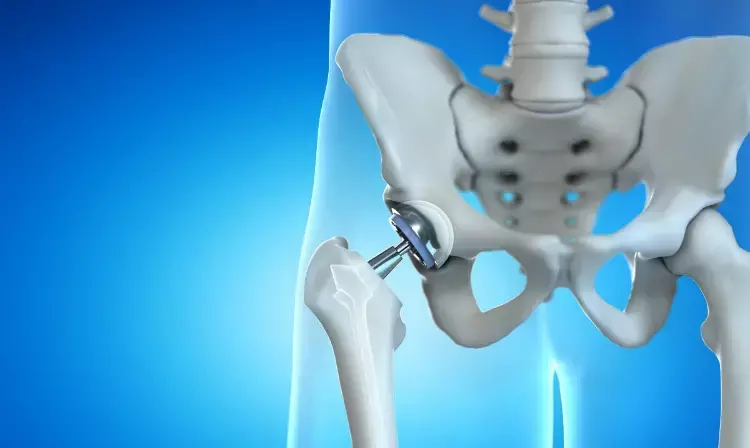- Home
- Medical news & Guidelines
- Anesthesiology
- Cardiology and CTVS
- Critical Care
- Dentistry
- Dermatology
- Diabetes and Endocrinology
- ENT
- Gastroenterology
- Medicine
- Nephrology
- Neurology
- Obstretics-Gynaecology
- Oncology
- Ophthalmology
- Orthopaedics
- Pediatrics-Neonatology
- Psychiatry
- Pulmonology
- Radiology
- Surgery
- Urology
- Laboratory Medicine
- Diet
- Nursing
- Paramedical
- Physiotherapy
- Health news
- Fact Check
- Bone Health Fact Check
- Brain Health Fact Check
- Cancer Related Fact Check
- Child Care Fact Check
- Dental and oral health fact check
- Diabetes and metabolic health fact check
- Diet and Nutrition Fact Check
- Eye and ENT Care Fact Check
- Fitness fact check
- Gut health fact check
- Heart health fact check
- Kidney health fact check
- Medical education fact check
- Men's health fact check
- Respiratory fact check
- Skin and hair care fact check
- Vaccine and Immunization fact check
- Women's health fact check
- AYUSH
- State News
- Andaman and Nicobar Islands
- Andhra Pradesh
- Arunachal Pradesh
- Assam
- Bihar
- Chandigarh
- Chattisgarh
- Dadra and Nagar Haveli
- Daman and Diu
- Delhi
- Goa
- Gujarat
- Haryana
- Himachal Pradesh
- Jammu & Kashmir
- Jharkhand
- Karnataka
- Kerala
- Ladakh
- Lakshadweep
- Madhya Pradesh
- Maharashtra
- Manipur
- Meghalaya
- Mizoram
- Nagaland
- Odisha
- Puducherry
- Punjab
- Rajasthan
- Sikkim
- Tamil Nadu
- Telangana
- Tripura
- Uttar Pradesh
- Uttrakhand
- West Bengal
- Medical Education
- Industry
Use of Digital Fluroscopy resulted in more accurate execution of lengthening in THA

Limb length discrepancy (LLD) after THA is an undesirable outcome, and its incidence in the literature varies between 1% and 27 %. It can lead to patient dissatisfaction and secondary complications including gait disturbance, low-back pain, neuritis, component instability, and early component loosening. Clinical evaluation and preoperative templating establish the intended lengthening.
R O’Leary et al conducted a study to assess whether digital fluoroscopic navigation (DF) improved the accuracy of planned lengthening in direct anterior approach total hip arthroplasty (DAA-THA).
The study has been published in ‘Arthroplasty Today’ journal.
Planned lengthening measurements on 100 consecutive unilateral DAA-THA patients, along with patient characteristics, were prospectively collected by 2 surgeons. One surgeon utilized DF to achieve intended length (n = 50), while the other utilized unaided standard fluoroscopy (SF; n = 50). A third surgeon blinded to the procedures assessed actual limb length using an ipsilateral overlay technique on the 6-week postoperative radiograph. The difference between the mean planned and actual limb lengthening stratified by DF and SF was assessed using bivariate and multivariate statistics.
Key findings of the study were:
• The mean (SD) age was 65.0 (9.7) years (range, 46-87).
• Osteoarthritis was the diagnosis in 95%, while avascular necrosis was seen in 5%.
• Both groups had similar demographic characteristics.
• 67 procedures were right-sided, and 33 procedures were of left laterality.
• The mean (standard deviation) planned lengthening in DF and (standard unaided fluoroscopy) SF groups was 3.96 (2.1) and 3.47 (2.2) mm, respectively.
• The mean (standard deviation) actual lengthening in DF and SF groups was 3.11 (4.0) and 0.68 (4.6) mm, respectively.
• The mean (SD) BMI for patients in DF and SD groups was 29.72 (6.5) and 29.39 (11.8).
• After accounting for age, sex, body mass index, laterality, and the Bone Index, multivariate regression results showed that the average difference between planned and actual limb lengthening in the DF group was significantly lower than that in the SF group (beta = 1.92; 95% confidence interval: 3.51, 0.33; P < .02).
• A greater percentage of patients in the DF group (66% vs 40%) were within 3 mm of the intended plan (P < .01).
The authors concluded that – “The use of fluoroscopy in DAA-THA helps achieve intended limb lengthening. Enhancement with digital navigation resulted in more accurate execution of planned limb lengthening.”
Further reading:
Digital Fluoroscopic Navigation for Limb Length Restoration During Anterior Total Hip Arthroplasty Robert O’Leary, Anshul Saxena et al Arthroplasty Today 18 (2022) 11-15 https://doi.org/10.1016/j.artd.2022.08.021
MBBS, Dip. Ortho, DNB ortho, MNAMS
Dr Supreeth D R (MBBS, Dip. Ortho, DNB ortho, MNAMS) is a practicing orthopedician with interest in medical research and publishing articles. He completed MBBS from mysore medical college, dip ortho from Trivandrum medical college and sec. DNB from Manipal Hospital, Bengaluru. He has expirence of 7years in the field of orthopedics. He has presented scientific papers & posters in various state, national and international conferences. His interest in writing articles lead the way to join medical dialogues. He can be contacted at editorial@medicaldialogues.in.
Dr Kamal Kant Kohli-MBBS, DTCD- a chest specialist with more than 30 years of practice and a flair for writing clinical articles, Dr Kamal Kant Kohli joined Medical Dialogues as a Chief Editor of Medical News. Besides writing articles, as an editor, he proofreads and verifies all the medical content published on Medical Dialogues including those coming from journals, studies,medical conferences,guidelines etc. Email: drkohli@medicaldialogues.in. Contact no. 011-43720751


